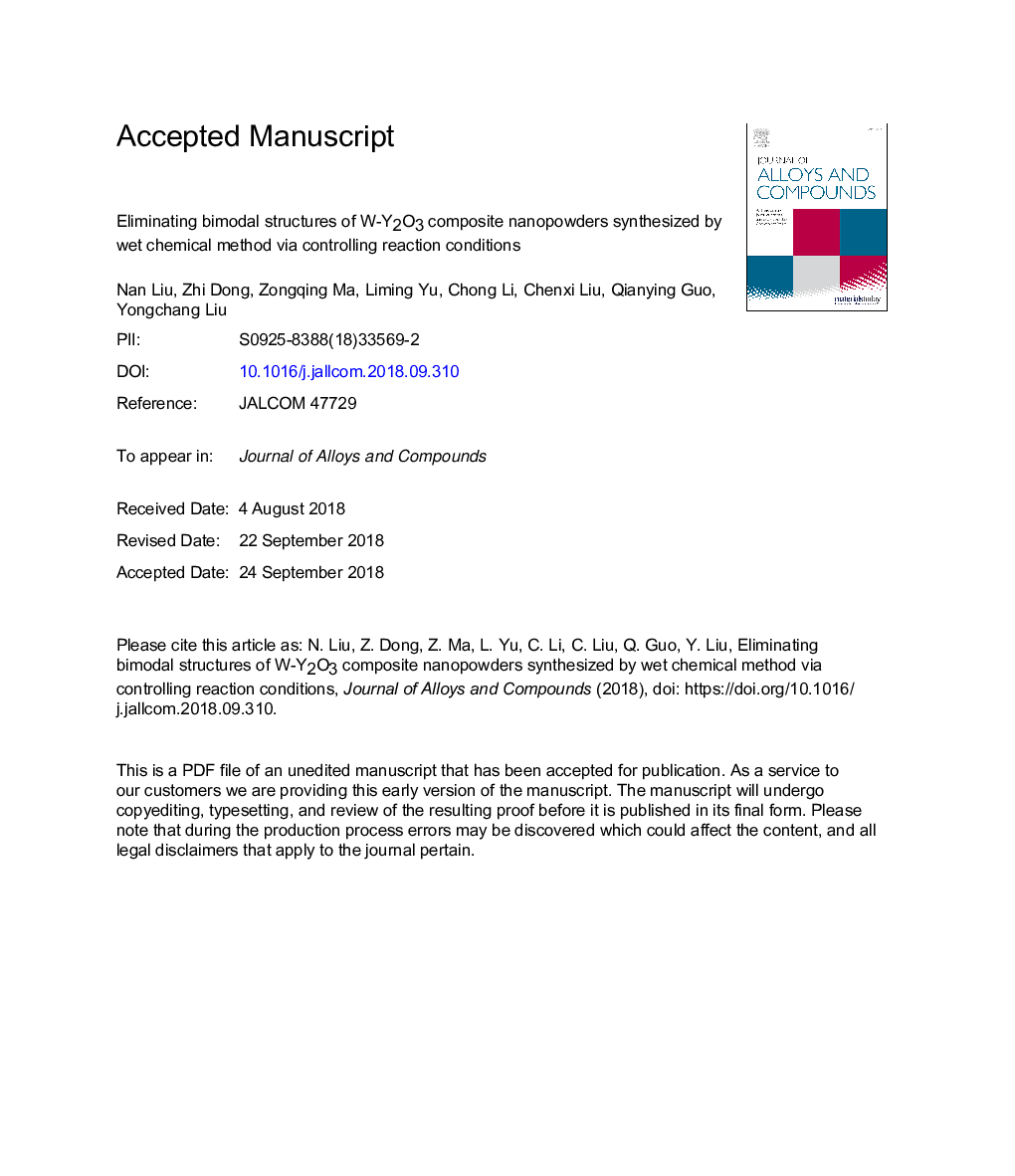| کد مقاله | کد نشریه | سال انتشار | مقاله انگلیسی | نسخه تمام متن |
|---|---|---|---|---|
| 11015759 | 1781703 | 2019 | 20 صفحه PDF | دانلود رایگان |
عنوان انگلیسی مقاله ISI
Eliminating bimodal structures of W-Y2O3 composite nanopowders synthesized by wet chemical method via controlling reaction conditions
دانلود مقاله + سفارش ترجمه
دانلود مقاله ISI انگلیسی
رایگان برای ایرانیان
کلمات کلیدی
موضوعات مرتبط
مهندسی و علوم پایه
مهندسی مواد
فلزات و آلیاژها
پیش نمایش صفحه اول مقاله

چکیده انگلیسی
The bimodal distribution of tungsten grain size, which is also called bimodal structure, is a universal phenomenon in synthesizing tungsten based nanopowders by wet chemical method, and could significantly deteriorate further sintering characteristics of the powders. In this paper, W-Y2O3 composite nanopowders with small grain size and no bimodal structure were synthesized by an improved wet chemical method. It was found that reaction conditions, especially the hydrogen ion concentration(Ï(H+)) could significantly influence the microstructure and morphology of the prepared composite nanopowders and has an optimum value of approximately 0.16â¯molâ¯Lâ1. W-Y2O3 composite nanopowders synthesized under this optimum value got not only the minimum average grain size, which is about 17â¯nm, but also the best grain size uniformity with no bimodal structure. The microstructure of co-deposited precursors and prepared powders was analyzed in detail to figure out the specific influence mechanism of Ï(H+), and it was indicated that Ï(H+) could influence the microstructure and the Y2O3 content of the reduced powders through affecting the fraction of precursor that has little yttrium content, which may lead to the bimodal distribution of tungsten grain size of the prepared powders. Furthermore, the formation mechanism of bimodal structure was systematically analyzed and a feasible method was proposed to eliminate the bimodal structure. It is suggested that the bimodal distribution of tungsten grain size is attributed to the distribution of Y2O3 during hydrogen reduction process and can be well avoided by controlling Ï(H+).
ناشر
Database: Elsevier - ScienceDirect (ساینس دایرکت)
Journal: Journal of Alloys and Compounds - Volume 774, 5 February 2019, Pages 122-128
Journal: Journal of Alloys and Compounds - Volume 774, 5 February 2019, Pages 122-128
نویسندگان
Nan Liu, Zhi Dong, Zongqing Ma, Liming Yu, Chong Li, Chenxi Liu, Qianying Guo, Yongchang Liu,